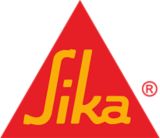
Sikaflex®-211 US
Multi-purpose general sealant
Sikaflex®-211 US is a multi-purpose 1-component polyurethane sealant that cures on exposure to atmospheric moisture. It bonds well to a wide variety of substrates and is suitable for making permenant elastic seals.
- Bonds to a wide variety of substrates often without surface treatments/primers
- Very good gunnability and tooling characteristics
- Can be sanded and painted
- Short cut-off string
- Tested to ASTM E84 – Standard Test Method for Surface Burning Characteristics of Building Materials
- Tested to ASTM E90 – Standard Test Method for Laboratory Measurement of Airborne Sound Transmission Loss of Building Partitions and Elements

